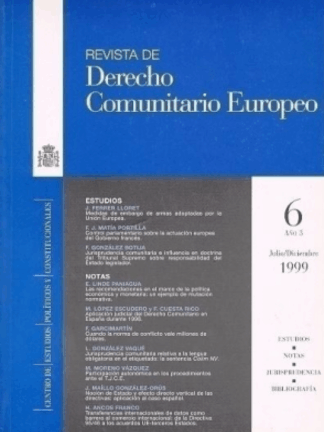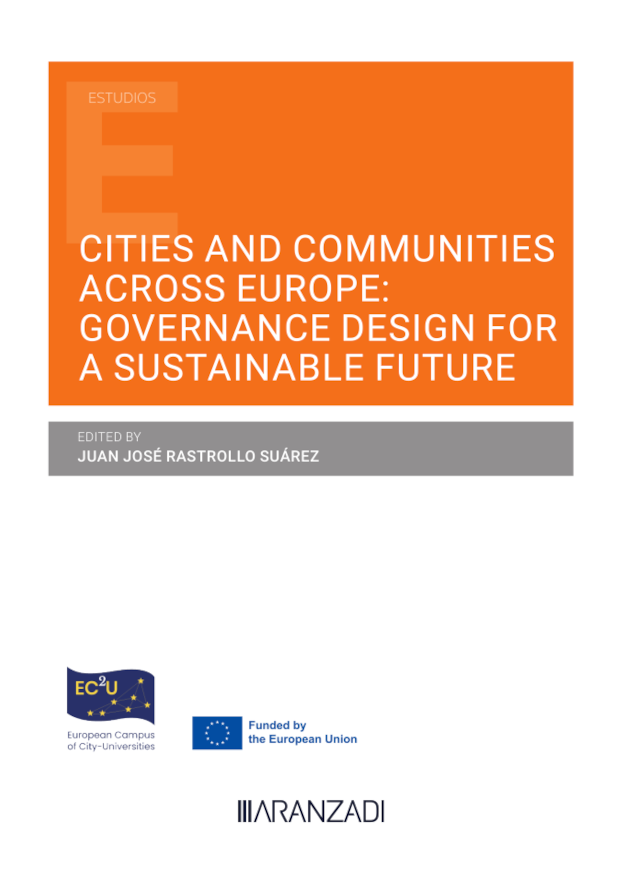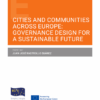Descripción
Cities and comunities across Europe: Governance design for a sustainable future
The present volume represents a unique contribution to its field. First of all, because it is the result of a common research effort by members of different European institutions of higher education, working together under the umbrella of the European Campus of City Universities Project (EC2U). The project brings together, with the goal of creating an integrated academic community, the Universities of Coimbra in Portugal, Iași in Romania, Jena in Germany, Pavia in Italy, Poitiers in France, Salamanca in Spain, and Turku in Finland.
Secondly, the volume represents a special contribution because its authors, scholars of renown from different academic institutions across the European continent, contribute to the construction of a multidisciplinary and integrated concept of sustainability from the perspective of the social sciences. In this way, disciplines such as law, political science, economics, geography and sociology are combined, in order to develop the projection and meaning that the concept of sustainability can embody across the whole range of social science studies.
Among the United Nations Sustainable Development Goals, number eleven corresponds to Sustainable Cities and Communities, and it specifically refers to the need to make cities and human settlements inclusive, safe, resilient and sustainable. Throughout this book, some of the key factors for achieving these objectives are discussed from the point of view of the human and social sciences, under a European theoretical framework.
PREFACE: CITIES AND COMMUNITIES ACROSS EUROPE: GOVERNANCE DESIGN FOR A SUSTAINABLE FUTURE
JUAN JOSÉ RASTROLLO SUÁREZ
1
ENERGY TRANSITION AND INVESTMENT PROTECTION: THE EUROPEAN UNION BEFORE THE ENERGY CHARTER TREATY
MIGUEL ÁNGEL ANDRÉS LLAMAS
1.Introducción
2.International competition and cooperation in environmental and energy law
3.International investment arbitration in the European Union
4.The position of the European Union before the Energy Charter
5.Conclusions
Bibliography
2
BEYOND THE HUMAN RIGHT TO A HOME: THE RIGHT TO A HABITAT (RESTORATION OF URBAN ECOLOGICAL INFRASTRUCTURE TO DELIVER URBAN ECOSYSTEM SERVICES)
ALEXANDRA ARAGÃO
1.From the right to a home to the right to a habitat
2.The right to a home as a human right
2.1.The environment in the European Court of Human Rights
2.2.Beyond the right to a home: the right to a human habitat in the European Court of Human Rights
3.Human habitats and ecosystem services in the cities
3.1.The emergence of ecosystem services
3.2.A typology of ecosystem services
4.Ecosystem services of habitats in urban ecological infrastructures
4.1.Characterization of urban ecological infrastructures
4.2.The ecosystem services of urban ecological infrastructures
5.The duty to protect and restore urban ecological infrastructures
5.1.Existing directives imposing ecological restoration
5.2.Future regulation imposing ecological restoration
6.Urban ecological infrastructure law: ensuring more sustainable cities
References
3
SUSTAINABILITY AND AGRICULTURE. A LEGAL PERSPECTIVE
IOANA MARIA COSTEA
MARIA LAIU
1.A history of agriculture. Once upon a time…
1.1.Historical remarks
1.2.Sustainable agriculture versus expanding agriculture
1.3.Conventional farms versus progressive farms
2.Factors involved in sustainable agriculture
2.1.Biophysical environment
2.2.Socio-political environment
2.3.Institutional factors – farmers, farms, farming
3.Policy-making instruments in shaping a sustainable agriculture
3.1.Ecological sustainability
3.2.Business sustainability
3.2.1.Business structures for farms
3.2.2.Public financial support for agricultural activities
4.Conclusions and perspectives
References
4
FLEXIBILITY IN URBAN PLANNING: RULES, OPPORTUNITIES AND LIMITS
ROBERTO DE LOTTO
1.Introduction
2.Recent approaches for flexible city planning in complex contexts
2.1.Evolutionist approach
2.2.Organicism in urban planning
2.3.Flexibility principles
2.4.Anthropological spaces
3.Actors of the urban complex system
4.Lack of certainty in planning activity for public actors
4.1.Hyper-determined planning VS free rules
5.Smart city and smart citizen
6.The environmental topics and the smart environment
7.Decision making, tools and rules definition in urban planning
8.Opportunities and limits: a discussion
References
5
THE WORLD ON THE BRINK: WAYS OUT OF THE PINCER CRISIS
KLAUS DÖRRE
1.Pincer crisis and social transformation
2.Climate justice as an inter-state problem
3.Climate justice as an internal societal problem
4.Ways out of the pincer crisis
5.“Choke chain effect”, infrastructure and socialism
Concluding Remarks
6
THE PRIVATE PROPERTY QUALIFIED AS CULTURAL HERITAGE: THE LEGAL FRAMEWORK IN ITALY AND THE SUSTAINABLE ENFORCES THROUGH THE RETROFIT POLICY
ANNY FALCÃO SCHWENDLER
1.Introduction
2.The city and its social function in the cultural context
3.The property: as the material cultural good
4.The social function of property holding agricultural cultural goods
5.Cultural or artificial environment?
6.The legal framework of cultural heritage in Italy: the Codice dei beni culturali e del paesaggio
7.The implications between the Right to property and the Development right: the instrumentalization of the social-cultural function
8.The enforces retrofit questions in Italia in the private properties classified as built heritage
9.Conclusions
References
7
POLITICAL AND SOCIAL PERSPECTIVES ON URBAN SUSTAINABILITY. ISSUES OF LEGITIMACY AND IMPLEMENTATION
AGUSTÍN E. FERRARO
1.Introduction
1.1.Social and political components of sustainability
1.2.Sustainability in Urban Spaces: North and South
1.3.Sustainability and Political Legitimacy
2.Conclusions
References
8
PROMOTING SUSTAINABLE DEVELOPMENT THROUGH URBAN LAND USE LAW AND POLICY IN FINLAND
MARTTI HÄKKÄNEN
1.Introduction
2.Cities and municipalities in Finland
3.Sustainable development in the regulation of land use and construction
3.1.Cities’ role in planning and planning instruments
3.2.Sustainable development as a general principle of environmental law
3.2.1.Sustainable development in land use planning
3.2.2.Sustainable development in building regulation
3.2.2.1.Current regulation
3.2.2.2.Legislative reform 2022
4.Sustainable development in the land policy of cities and municipalities
4.1.Active land policy
4.2.Sustainable development in land policy practices
5.Finally
References
Literature
Legislation
Case Law
9
PUBLIC SAFETY AND JUSTICE IN THE CITY. LEGAL REGULATIONS OF URBAN SECURITY IN THE EUROPEAN UNION
JUAN JOSÉ RASTROLLO SUÁREZ
1.Introduction
2.Public safety as a constitutional imperative
3.The connections between urban planning and security
4.The European urban planning model
5.The just city in the framework of the Leipzig Charter
6.Conclusions
7.Bibliography
10
TOWARDS GREEN AND PRODUCTIVE CITIES IN THE EUROPEAN UNION. SUSTAINABILITY, URBAN PLANNING, AND THE ENVIRONMENT
JUAN JOSÉ RASTROLLO SUÁREZ
1.Introduction
2.Economic initiative in European constitutionalism
3.Sustainable Development Goals: economic development and sustainability
4.The European urban model: economic development, gentrification and protection of the urban landscape
5.The productive city in the framework of the Leipzig Charter
6.Conclusions
Bibliography
11
THE FRENCH-STYLE SUSTAINABLE CITY THROUGH THE SMART CITY: NEW URBAN MODEL
ISABELLE SAVARIT-BOURGEOIS
Section 1.– The model of the french-style smart city, “daughter” of the sustainable city
1.Data at the service of sustainable development and sobriety
1.1.An ambitious digital challenge: the sectors associated with the smart city
1.1.1.Smart grids for better energy supply
1.1.2.The mobility challenge, for cost-effective and free-flowing movement
1.1.3.The smart building, towards a new building functionality
1.2.The blind spot of the smart city: the question of ecological footprint. Where does green data fit in?
2.“Scientific urban management” with an impact
2.1.Challenging the traditional model of networks and city management
2.2.The impact on urban planning: towards more “adaptive” planning?
2.2.1.Planning vs digital technology: time vs. the unforeseen
2.2.2.Planning and data: complementary tools for understanding the city
Section 2.– The French-style smart city, a structurally “invisible” urban model
1.The digital city, the absence of an urban model in the traditional sense
1.1.The absence of urban disruption
1.2.An “elusive” territory
2.The smart city, a new urban narrative driven by the reality principle?
2.1.Intelligent urban models because they are adaptable and changeable
2.1.1.A new urbanism for cities based on context rather than “a model”?
2.1.2.Recent trends
2.2.The intelligent city, a new urban utopia?
References
12
SUSTAINABILITY AND PUBLIC PROCUREMENT
DANIEL TERRÓN SANTOS
1.Enviromental clauses
1.1.Environment, sustainable development and public procurement
1.2.Environmental clauses and clauses for innovation and development in the 2017 Spanish Public Sector Contracts Law
2.Social clauses
2.1.Social aspects of public procurement
2.2.Social obligations for contracting with the Administration
2.3.Prohibitions for public procurement related to social clauses
Editor
JUAN JOSÉ RASTROLLO SUÁREZ
Autores
| Miguel Ángel Andrés Llamas |
Agustín Ferraro |
| Alexandra Aragão |
Martti Häkkänen |
| Ioana Maria Costea |
Maria Laiu |
| Roberto De Lotto |
Juan José Rastrollo Suárez |
| Klaus Dörre |
Isabelle Savarit-Bourgeois |
| Anny Falcão Schwendler |
Daniel Terrón Santos |

 PDF Revista de Derecho Comunitario Europeo Nº 77. Enero/ Abril 2024
PDF Revista de Derecho Comunitario Europeo Nº 77. Enero/ Abril 2024 

